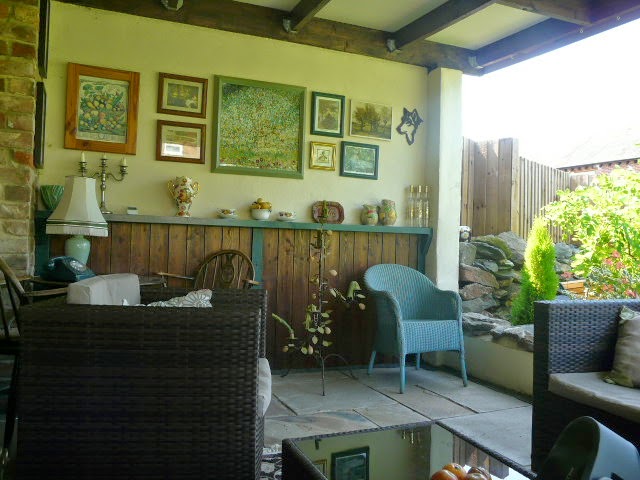We will not cross skies or seas or bolt across the land in trains or cars; not travel at 500 mph - or even 100 - but at the stately speed of 10.
Sometimes less, if there are hills in the way.
We're on bikes, my son and I, travelling down through the Midlands of England into Hertfordshire - on a journey that normally takes just over two hours by car.
We will take three days.
On the first day we cycle as far as my neice's house with a present for her new born baby. Years later I'll tell Alyssa we rode 55 miles with her 'welcome to the world' present in the pannier. By the third day I will reach her Grandmother, my sister. I'll pass on the latest news about her daughter Rachel and husband, Steve, and tell her all about Ayssa. Never mind that the news will be two days old and out of date.
I'm experiencing what it's like to live in the past - when times were slower and news travelled slowly too.
At the beginning of the the First World War, young men, some just boys, joined up to see the world - or at least the trenches of France. Many of them had been no further than a five or ten mile radius of their village or town. Such was life for most of people. Travel was mostly restricted to foot or bike, occasionally a train. And now I'm experiencing that pace of life.
The world looks very different from a saddle.
At 8.30 we've reached the Cromford canal, shrouded in morning mist. I breathe in the smell of wild garlic; hear the Little Grebes pipe on the water. The dew-covered verge-side vegetation slaps against my legs; cold, wet.
Cycling engages all the senses. Travelling by car or train or plane sanitises them.
Late morning, we leave the dismantled railway trail and canal path behind. We stop in the village of Belton in search of a caffine shot. Two women hog the single outside table of the village shop. The pub has closed down. A local stops and asks:
"Can I help you?
"The pub?"
"Sorry, the pub has closed, but come and have coffee with me."
We follow him down the street to the Victorian house with its cottage garden and orchard. Raymond has a summer house, a Victoriana vintage chic-shabby living-room open to the orchard on two sides. It's a British take on the outdoors Mediterranean living space. He brings us coffee and cold water.
You don't have to go to Eastern Europe or further afield to receive hospitality from a stranger.
Over the next two days we cycle along country lanes, past barges on canals, through villages and towns.
We squelch through dark, puddled tunnels and slip past street musicians in market towns.
We watch children at play in city parks and young British Asians gathering for barbecues. In Leicester we'll follow Muslims in long, white gowns as they head for the mosque during Ramadan. We'll hear the wood pigeon and the skylark. We'll hear the roar of traffic on the motorways, and I'll visibly shrink at the speed of the traffic from the bridge above.
We'll stop at village pubs and park cafes and skirt city shopping streets, and I'll have a detailed picture of modern Britain.
You get a much stronger sense of what Britain is today, if you travel by bike.
But I'm already thinking of my next trip through England... and beyond.
Cycling by numbers:
8 cups of coffee on the road
5 cities
4 ice-creams
3 pairs of sunglasses lost
1 puncture
0 carbon footprint












